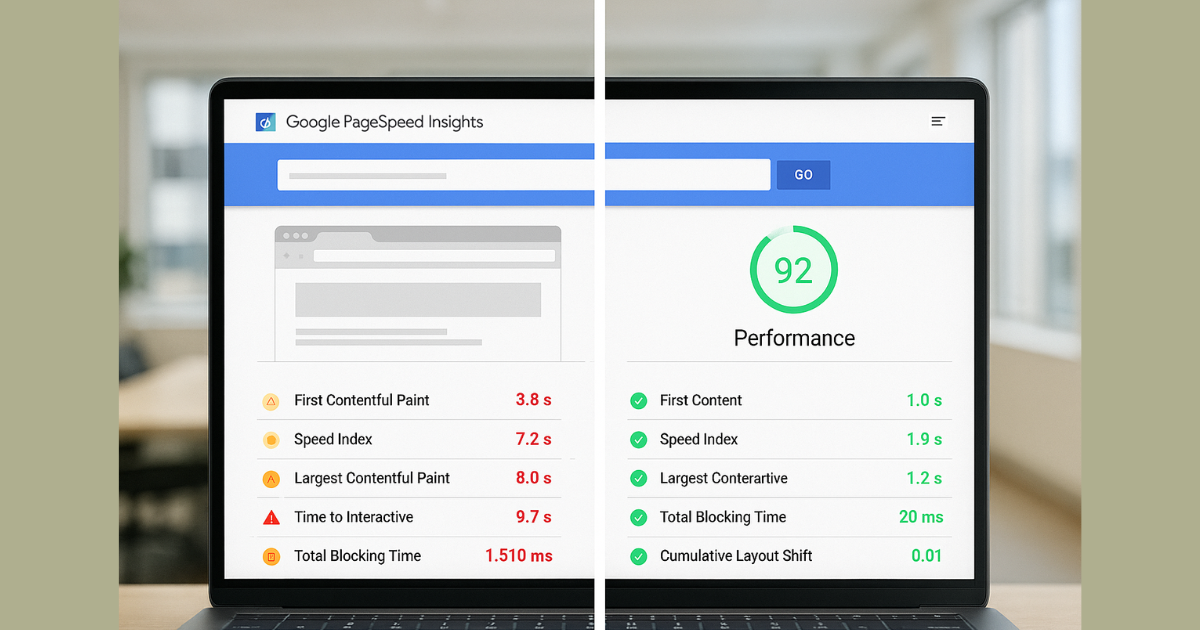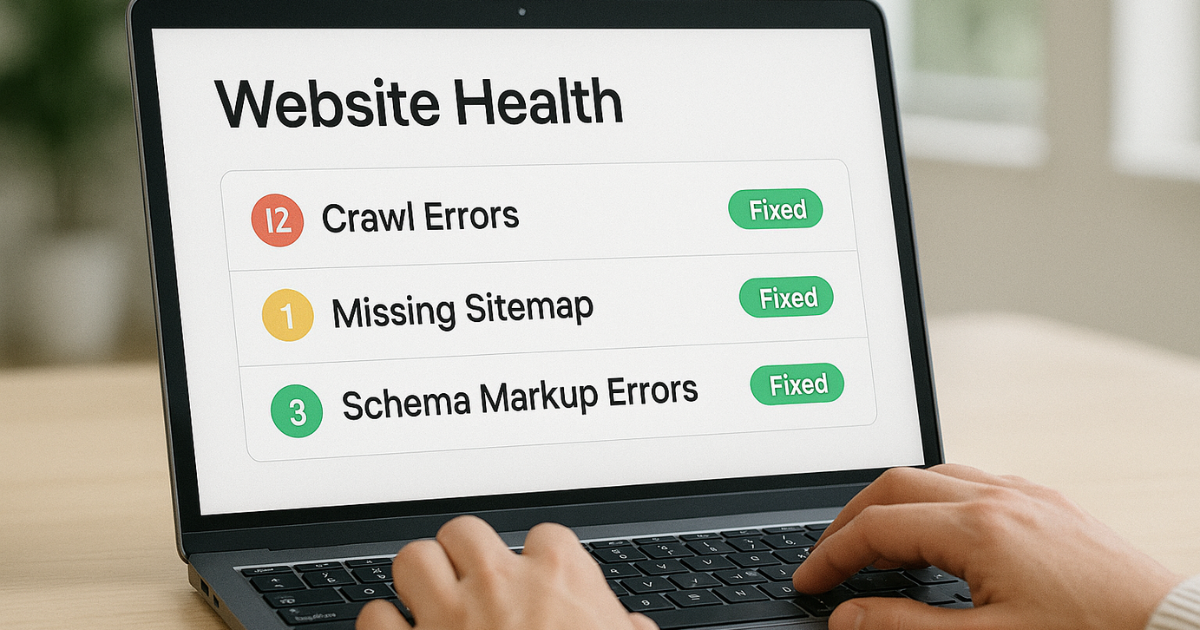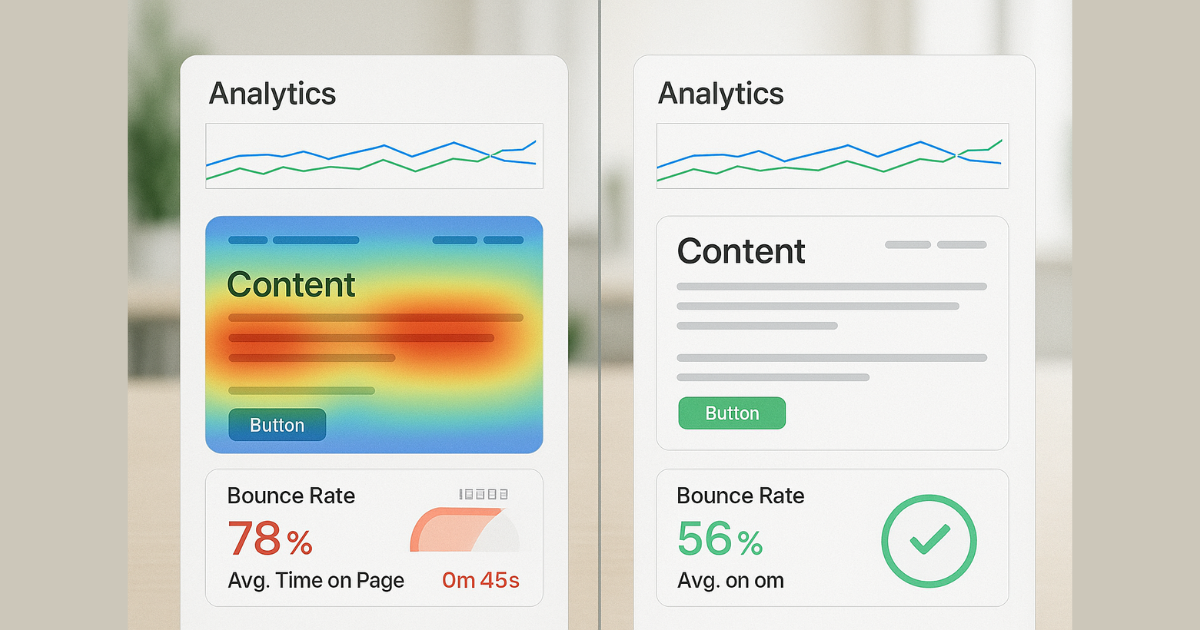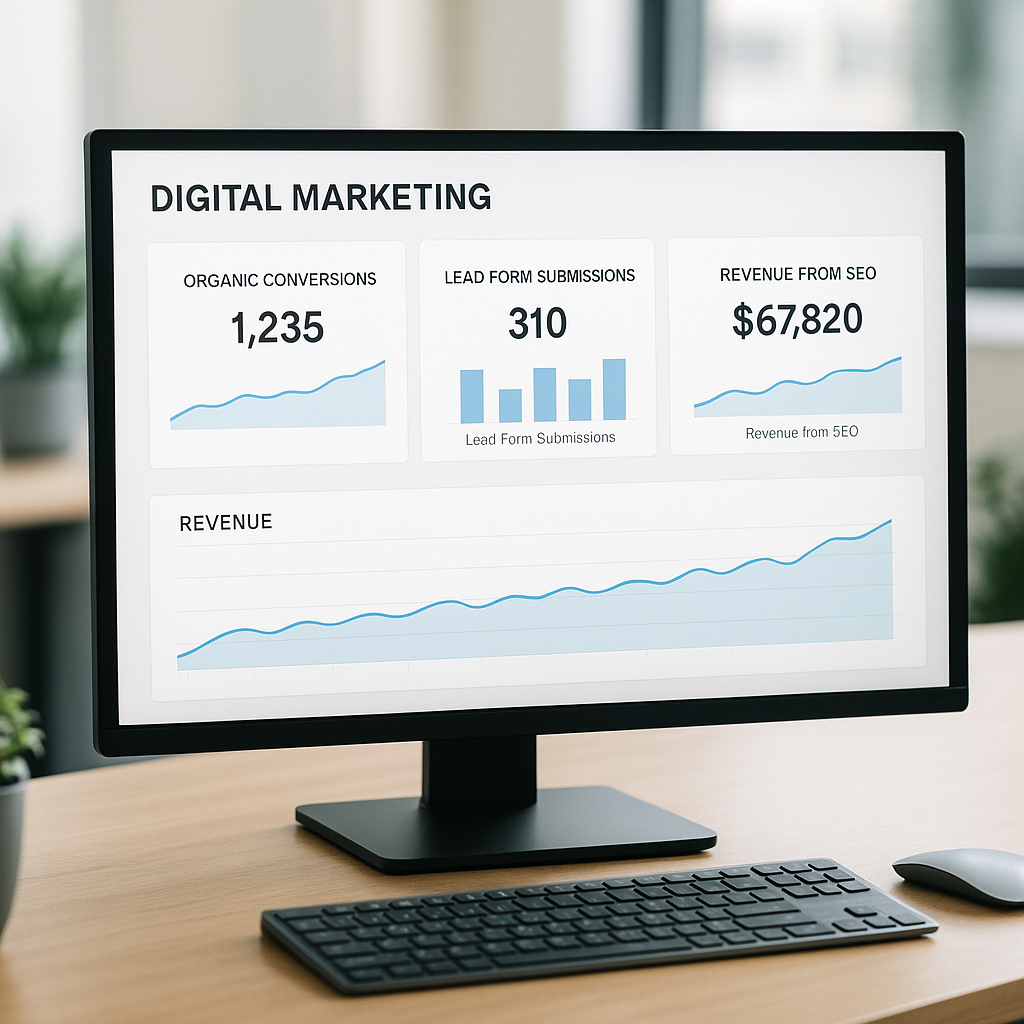You’ve done all the “right” things.
You hired an SEO expert. You even saw your rankings climb a little.
But… you’re still not getting results.
No significant traffic.
What gives?
The truth is: in 2025, SEO alone isn’t enough — and the wrong SEO strategy can waste your time and money.
Today, SEO is more complex and competitive than ever. Google’s algorithm has evolved. User behavior has changed. And businesses that cling to outdated tactics are being left behind — even if they’re technically “doing SEO.”
Whether you’re a startup founder, an e-commerce brand, or a local business, this post will help you get clarity. We’re breaking down the 10 most common reasons your SEO strategy isn’t working — and more importantly, how to fix them.
No fluff. No jargon. Just actionable insights from the Empex Digital team — the same strategy we use to help our clients not only rank, but convert.

Reason 1: You’re Only Focusing on Keywords
If your SEO strategy is built solely around chasing keywords, you’re operating with a 2015 playbook in a 2025 world.
For years, businesses believed that success in SEO meant stuffing the right keywords into titles, headers, and paragraphs — and watching the rankings rise. But Google has evolved. Today, it’s no longer just about matching queries — it’s about understanding intent and delivering real value.
Why This Doesn’t Work Anymore:
- Keyword stuffing harms readability and user trust
- Google now uses natural language processing (NLP) to understand meaning, not just phrases
- Short-term keyword wins rarely drive meaningful traffic if the content doesn’t align with user needs
- Pages optimized for keywords but not for value don’t convert
Worse, many businesses end up targeting high-volume keywords that are either too competitive or too broad, attracting the wrong audience.
How to Fix It:
- Focus on search intent: What is the user really trying to solve or achieve?
- Build topic clusters instead of scattered keyword posts
- Create pillar content that provides in-depth value and supports long-tail content
- Use tools like AnswerThePublic, AlsoAsked, and Semrush Topic Research
- Write for humans first, then optimize for search
At Empex Digital, we go beyond keywords — we craft SEO strategies built around user journeys, conversion goals, and content depth that Google loves and customers trust.
Modern SEO isn’t about getting found. It’s about being relevant when you are.
Reason 2: Your Website Is Too Slow
You can write the best content in the world and rank #1 on Google — but if your site takes forever to load, users won’t stick around long enough to read it.
In 2025, page speed isn’t just a performance issue — it’s an SEO ranking factor, a UX signal, and a conversion killer when ignored.
Google’s Core Web Vitals initiative directly measures load time, visual stability, and interactivity — and slow websites are being penalized in rankings while fast, optimized sites rise.
Symptoms of a Slow Site:
- High bounce rates, especially on mobile
- Poor scores on tools like Google PageSpeed Insights or Lighthouse
- Users leaving before pages even finish loading
- Low engagement despite strong content
Why It’s Happening:
- Bloated themes or plugins
- Uncompressed images
- Excessive third-party scripts (like old tracking codes or pop-ups)
- Outdated hosting infrastructure
- No caching or CDN usage
How to Fix It:
- Run your site through PageSpeed Insights or GTmetrix
- Compress all images (use WebP where possible)
- Implement lazy loading for offscreen images
- Use lightweight themes or switch to a custom-built site
- Upgrade your hosting or move to a performance-optimized stack
- Work with an agency (like Empex Digital) that builds with speed in mind from day one
Your website has 2–3 seconds to make an impression.
If it’s still loading, the user — and the opportunity — is already gone.

Reason 3: You Have Great Content — But Terrible UX
You’ve invested in blog content, added keywords, and maybe even built backlinks…
But people still bounce.
Why?
Because in 2025, User Experience (UX) is just as important as the content itself — and Google knows it.
It doesn’t matter how good your content is if your visitors find your site confusing, frustrating, or difficult to use. Google’s AI-driven algorithms are now trained to evaluate not just what your page says — but how users interact with it.
Common UX Failures That Hurt SEO:
- Poor navigation and messy menus
- Overwhelming layouts with no visual hierarchy
- Walls of unformatted text
- No clear CTAs or next-step prompts
- Obtrusive pop-ups or auto-play media
- Content buried under ads or irrelevant elements
These issues increase bounce rates and reduce dwell time — two major user signals that search engines interpret as: “This page isn’t helpful.”
How to Fix It:
- Structure content with headers, bullets, spacing, and visual flow
- Use clear, consistent navigation and mobile-friendly layouts
- Add relevant CTAs and internal links to guide user journeys
- Improve accessibility and readability (contrast, font size, etc.)
- Conduct user testing to identify friction points
- Redesign your site with a UX-first approach (Empex specializes in this)
SEO isn’t just about what you say. It’s about how it feels to interact with your site.
Reason 4: Your Site Isn’t Mobile-First
If your website still looks best on a desktop… you’re already behind.
In 2025, mobile-first isn’t a recommendation — it’s the default.
Over 70% of global search traffic now happens on mobile devices, and Google switched to mobile-first indexing years ago. That means your site’s mobile version is the version Google uses to rank you.
If your mobile experience is slow, broken, or hard to use — it’s not just hurting users, it’s killing your rankings.
Signs Your Mobile UX Is Failing:
- Tiny fonts or hard-to-tap buttons
- Horizontal scroll issues
- Menus that are hard to navigate on smaller screens
- Page elements misaligned or overlapping
- Slow load time over 3G/4G networks
- Mobile bounce rate significantly higher than desktop
Why That’s a Problem:
- Google prioritizes mobile usability in Core Web Vitals
- Users bounce fast when frustrated
- Conversions drop off dramatically when mobile flows aren’t optimized
- A poor mobile site experience damages brand credibility
How to Fix It:
- Test your site with Google’s Mobile-Friendly Test
- Implement responsive design that adapts fluidly to screen sizes
- Use thumb-friendly layouts with large touch targets
- Optimize mobile speed with lightweight assets and minimal blocking scripts
- Prioritize above-the-fold content to engage users quickly
- Consider developing a dedicated mobile app for recurring users
- Let Empex Digital rebuild your site or app with mobile-first UX as the foundation
In a mobile-first world, your desktop site is just the backup.
Optimize for the device your audience actually uses.

Reason 5: You’re Not Building Topical Authority
In 2025, Google doesn’t just want answers — it wants experts.
If your website only has a few scattered blog posts on different topics, it’s unlikely to outrank competitors who’ve built structured, in-depth coverage on their core subject matter.
This is what Google now calls topical authority — the idea that your site thoroughly covers a subject area in a way that proves expertise, depth, and relevance.
The Problem with “One-Off” SEO Content:
- Publishing random, keyword-driven blogs with no content strategy
- No internal linking between related pages
- Pages competing with each other (cannibalization)
- Low content depth: short posts that barely scratch the surface
Google’s AI-powered algorithms reward content depth + structure — not just keyword usage. That means your site needs to show it can own a topic, not just touch on it.
How to Fix It:
- Identify your core topic pillars (e.g., “SEO strategy,” “e-commerce marketing,” etc.)
- Create pillar pages (ultimate guides) with long-form, high-quality content
- Build supporting cluster content that dives deeper into subtopics
- Interlink all related content for crawlability and user experience
- Update existing content to reflect the latest search trends
- Use Empex Digital’s content strategy services to map it all out
A few blog posts won’t get you to page 1.
But owning an entire topic in-depth will.
Reason 6: You Don’t Have a Technical SEO Foundation
You can write all the optimized content you want, but if Google can’t crawl, index, or understand your website properly…
it won’t rank.
That’s where technical SEO comes in — and without it, your entire SEO strategy is sitting on shaky ground.
Technical SEO is the backbone that ensures your site is fast, accessible, crawlable, secure, and correctly structured for search engines. It’s not flashy — but in 2025, it’s non-negotiable.
Signs of Poor Technical SEO:
- Broken internal links or 404 errors
- No XML sitemap or improperly structured sitemap
- Missing robots.txt file
- Slow site speed or high Time to First Byte (TTFB)
- Duplicate content issues
- Poor use of heading tags, no schema markup
- Pages not being indexed by Google
Many business owners don’t even realize their site is suffering from these issues until it’s too late — because they’re often hidden from view.
How to Fix It:
- Run a full technical SEO audit using tools like Screaming Frog, Ahrefs, or Semrush
- Generate and submit an updated XML sitemap to Google Search Console
- Ensure robots.txt is properly configured
- Fix broken links, redirect errors, and duplicate pages
- Implement structured data (schema) for rich snippets
- Upgrade hosting/server-side performance (CDNs, caching)
- Or let Empex Digital handle it — we run comprehensive technical audits and resolve every issue in your stack.
You can’t build long-term SEO success on a broken foundation.
Technical SEO is the groundwork Google needs — before it rewards you.

Reason 7: Your Content Isn’t Optimized for Search Intent
You may be using the right keywords.
You may even have well-written content.
But if it doesn’t match what the searcher actually wants, Google will ignore it — and so will users.
This is where search intent comes into play. In 2025, Google is laser-focused on delivering results that best match the why behind the query — not just the words in the query.
The 4 Types of Search Intent:
- Informational – “What is SEO?”
- Navigational – “Semrush login”
- Transactional – “Buy website redesign service”
- Commercial investigation – “Best SEO agency UK”
If your content doesn’t match the intent behind the keyword, users bounce — and Google notices.
Common Mismatches:
- Writing a blog post for a keyword with transactional intent
- Offering a product page when users are looking for a tutorial
- Targeting keywords just because they have volume, not relevance
- Creating generic content without answering the real user need
How to Fix It:
- Google your target keyword and analyze the top-ranking results
- Identify the dominant intent: are users looking to learn, compare, or buy?
- Structure your content to fully satisfy that intent (use FAQs, CTAs, visuals)
- Use intent-specific keywords: “how to,” “best tools,” “vs,” “hire,” etc.
- At Empex Digital, we build content strategies that align perfectly with intent to drive qualified traffic that converts
It’s not about what you want to say — it’s about what the user needs to see.
Reason 8: You’re Ignoring User Signals
Your website may rank on page one.
But if users click and then quickly leave…
Google sees that — and you start dropping fast.
In 2025, user signals are one of the most important indirect ranking factors. These include behaviors like:
- Bounce rate
- Time on page
- Pages per session
- Click-through rate (CTR)
- Return visits
Search engines now use this behavioral data to measure how satisfied users are with your content.
If your SEO strategy doesn’t account for user engagement and flow, you’re not sending the right signals.
Common UX & Signal Issues:
- Weak or confusing headlines (low CTR)
- Cluttered layout, no visual hierarchy
- Walls of text without formatting
- No internal links or next-step CTAs
- Unclear value proposition
- Popups or distractions that frustrate visitors
These issues don’t just affect SEO — they ruin your sales funnel.
How to Fix It:
- Use clear, benefit-driven titles and meta descriptions
- Add hooks at the start of every page to keep users reading
- Break content into digestible sections with visuals and headings
- Strategically place internal links to reduce bounce
- Use heatmaps and session recordings (e.g., Hotjar) to study user behavior
- At Empex Digital, we optimize both for search engines and humans — because one without the other just doesn’t work
Want better rankings? Focus on creating a great experience — not just a great headline.

Reason 9: Your SEO Is Not Integrated With Other Channels
SEO isn’t a solo act.
Yet many businesses treat it like one — isolating SEO from their content marketing, social media, email, and paid ads.
In 2025, that siloed approach just doesn’t work anymore.
Search engines now look at brand presence, user engagement, and content signals across multiple platforms. That means a strong, integrated marketing ecosystem helps SEO rank better, reach further, and convert more.
What Happens When SEO Stands Alone:
- Blog content gets no visibility because it’s not promoted
- SEO traffic doesn’t convert because there’s no email follow-up
- Social channels don’t reinforce brand authority
- Paid ads and organic content compete instead of working together
- No unified messaging across touchpoints
What an Integrated Strategy Looks Like:
- SEO blog posts promoted via social media and email newsletters
- Organic content repurposed into video, carousel posts, or lead magnets
- Landing pages built with SEO + paid traffic intent in mind
- Cohesive branding and CTAs across all platforms
- Seamless tracking across channels using UTM, GA4, and CRM tools
- A centralized digital strategy team (like Empex Digital) managing all pieces in sync
SEO alone may get you visibility.
But integrated digital strategy gets you growth.
Reason 10: You’re Not Tracking the Right Metrics
You’re ranking on page one.
Your traffic is growing.
But… your inbox is still empty.
Here’s the truth: not all SEO metrics matter — and most don’t matter at all if they’re not tied to your business goals.
Many business owners and even marketers obsess over vanity metrics like:
- Keyword rankings
- Total impressions
- Bounce rate
- Traffic volume
But SEO success isn’t about showing up.
It’s about showing up for the right people, in the right way, and getting them to take action.
The Wrong Metrics:
- “We ranked #1 for a keyword that no one searches with intent to buy”
- “We increased traffic but leads stayed flat”
- “Our bounce rate dropped, but conversions didn’t move”
The Right Metrics in 2025:
- Organic conversion rate (how many visitors take action)
- Leads or sales generated from SEO
- Time on page + engagement flow
- Customer acquisition cost (CAC) via SEO
- Return on SEO investment (ROAS/ROI)
- Keyword rankings for high-intent, revenue-generating searches
At Empex Digital, we build performance-driven SEO strategies. That means we don’t just boost traffic — we track and optimize the entire user journey, from search to conversion.
Don’t measure how popular your site is.
Measure how profitable your SEO is.

Conclusion: Fix Your SEO. Grow Your Business.
If your SEO strategy isn’t delivering traffic, leads, or sales — you’re not alone.
Thousands of businesses are pouring money into outdated tactics, keyword games, or agencies that focus on rankings over results.
But in 2025, SEO is no longer about just showing up on Google.
It’s about creating search experiences that drive real business growth — combining speed, intent, UX, authority, and strategy into one cohesive ecosystem.
Let’s quickly recap the 10 most common reasons SEO strategies fail:
- Focusing only on keywords
- Slow-loading, under-optimized websites
- Great content with poor UX
- Not designing for mobile-first users
- Lack of topical authority
- Weak technical SEO foundations
- Ignoring search intent
- Poor user engagement and signals
- No integration with other channels
- Tracking the wrong metrics
Ready to Fix It?
At Empex Digital, we build SEO strategies that don’t just rank — they convert.
From technical audits to content that ranks and performs, to fast, mobile-first websites and fully integrated digital campaigns — we handle the entire stack.
Whether you’re a startup, e-commerce brand, or service-based business, we’ll help you turn SEO into a predictable growth engine — not a guessing game.
